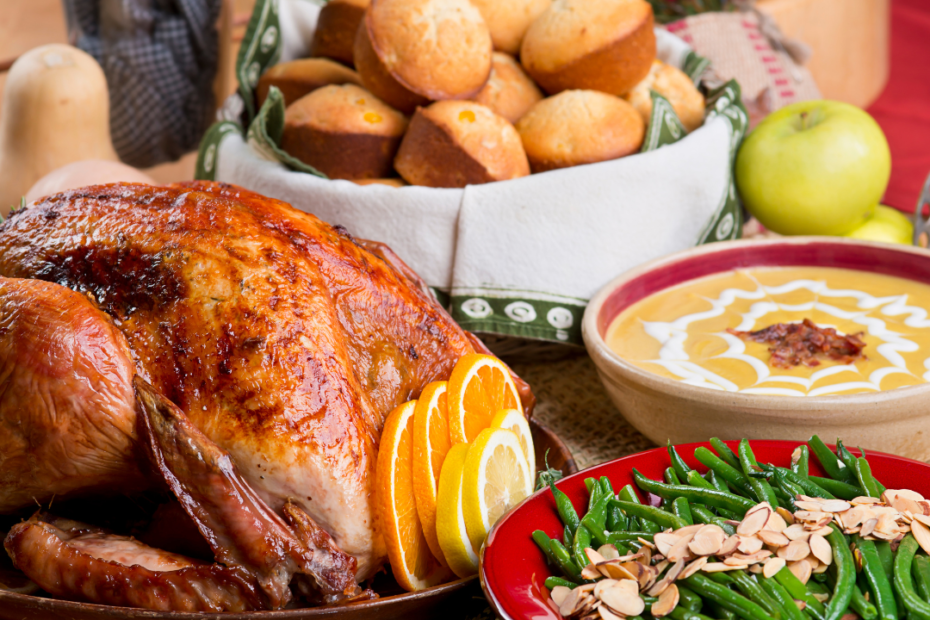For many people around the country, Thanksgiving Day is a time to relax, reflect on what we are thankful for, enjoy quality family time and, of course, partake in a delicious meal. It is natural to sit down at the dinner table with every intent to eat for pleasure and enjoyment. However, the mounds of food can be overwhelming, but practicing skills of intuitive eating can help manage this food-focused holiday.
What is intuitive eating?
Intuitive eating is about trusting yourself to make proper food choices that best fit your body, while excluding self-judgment and diet culture influences. Listening to your body to eat when, what, and how much feels right to you is key to intuitive eating. All foods fit, there are no good and bad foods.
Keep reading to learn 5 ways to help eat intuitively and celebrate during Thanksgiving.
- Start with smaller portions
Use a small plate (9-10 inches max) and fill it with anything you like. We tend to eat with our eyes first, and if the plate appears full, we may feel more physically satisfied. Setting up a natural pause between second helpings also allows the opportunity to ask ourselves if we may be getting full. - Slow down
Eating slower allows time for your body to give signals of fullness and leads to a reduced chance of overeating. Try eating with your non-dominant hand to slow your pace of eating, or perhaps chopsticks will slow you down. My own family tries to pace part of our meal to music, making sure to enjoy an entire 2-3 minute song while enjoying the mashed potatoes, for instance, and then move onto the roasted Brussel sprouts when the next song begins. - Check into feelings of hunger and fullness
Ask yourself if you’re still hungry or rate your hunger or fullness on a scale of 1-10. Try to come away from the food and focus on your companions when you start to feel comfortably full. - Eat food you enjoy alongside nutrient dense choices (that you hopefully also enjoy)
Remember, there are no good and bad foods. Give yourself permission to have anything you like. You may find that you feel happier and more satisfied with a meal that includes both nutrient dense foods (such as the roasted veggies) and comfort foods (such as Mom’s sweet potato casserole). Oftentimes excluding a preferred food leads to overeating it later on, followed by feelings of guilt. - Enjoy being with your friends and family
When you recognize that you are happy and satisfied from the food, focus on the family and friends aspect of the holiday.
Content summitted by Jessica Roy MS, RD, LDN and Rebecca Littman, Nutrition Intern
